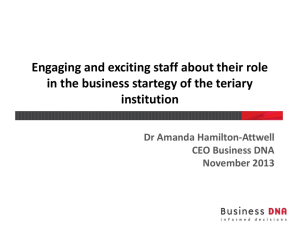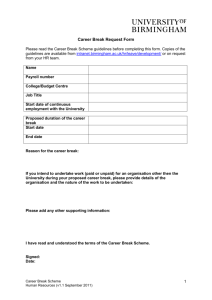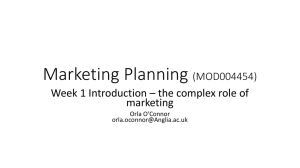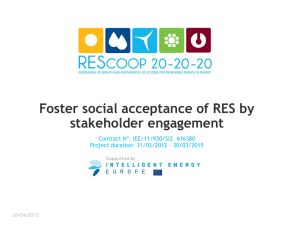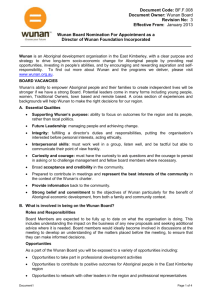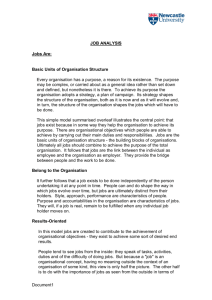Enterprise Wise RM Overview
advertisement
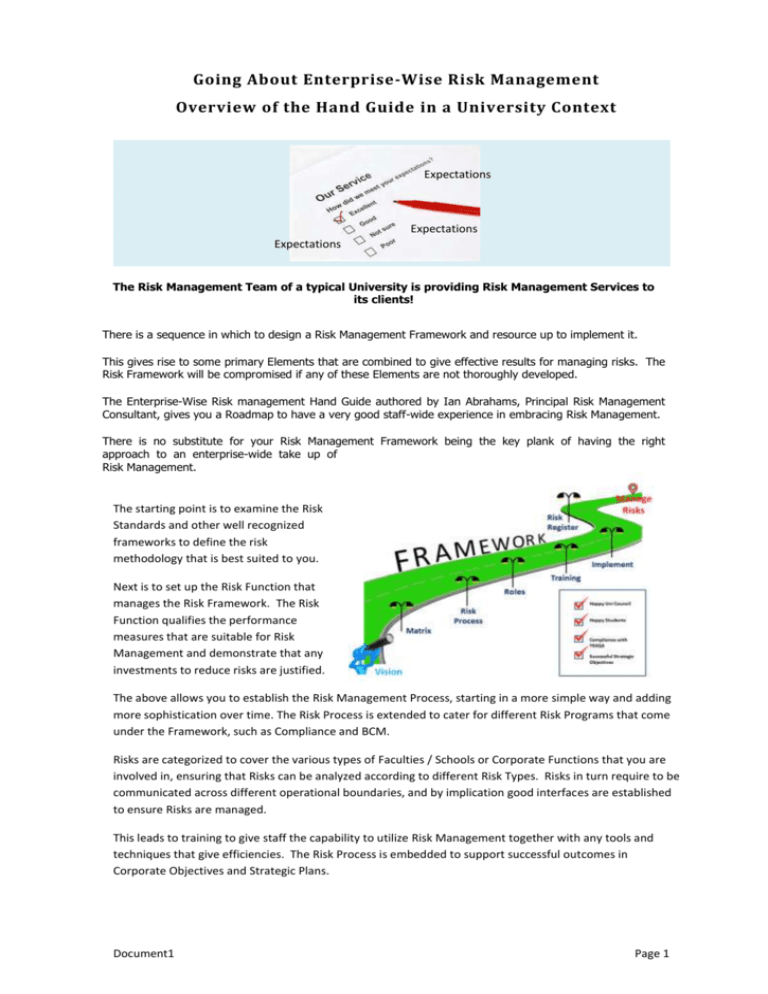
Going About Enterprise-Wise Risk Management Overview of the Hand Guide in a University Context Expectations Expectations Expectations The Risk Management Team of a typical University is providing Risk Management Services to its clients! There is a sequence in which to design a Risk Management Framework and resource up to implement it. This gives rise to some primary Elements that are combined to give effective results for managing risks. The Risk Framework will be compromised if any of these Elements are not thoroughly developed. The Enterprise-Wise Risk management Hand Guide authored by Ian Abrahams, Principal Risk Management Consultant, gives you a Roadmap to have a very good staff-wide experience in embracing Risk Management. There is no substitute for your Risk Management Framework being the key plank of having the right approach to an enterprise-wide take up of Risk Management. The starting point is to examine the Risk Standards and other well recognized frameworks to define the risk methodology that is best suited to you. Next is to set up the Risk Function that manages the Risk Framework. The Risk Function qualifies the performance measures that are suitable for Risk Management and demonstrate that any investments to reduce risks are justified. The above allows you to establish the Risk Management Process, starting in a more simple way and adding more sophistication over time. The Risk Process is extended to cater for different Risk Programs that come under the Framework, such as Compliance and BCM. Risks are categorized to cover the various types of Faculties / Schools or Corporate Functions that you are involved in, ensuring that Risks can be analyzed according to different Risk Types. Risks in turn require to be communicated across different operational boundaries, and by implication good interfaces are established to ensure Risks are managed. This leads to training to give staff the capability to utilize Risk Management together with any tools and techniques that give efficiencies. The Risk Process is embedded to support successful outcomes in Corporate Objectives and Strategic Plans. Document1 Page 1 Framework Elements Leverage well proven industry guidelines that define industry best practices to: Standards and Codes of Practice Organisation and Governance Performance Management Develop your own methodology Protect management and staff to make informed decisions where risks are taken to achieve the level of success aimed for Define the organisation structure to perform the Risk Function Define roles, accountabilities and decision rights to support the managing of risks Define suitable performance standards for Risk Management Monitor performance and have a plan to improve Link to Corporate Objectives to demonstrate benefits and to embed Risk Management into existing business processes to foster risk awareness Risk Management Processes The Risk Process defines the logical order in which Risks are identified, assessed, analyzed and managed, as well as treated where the level of risk needs to be modified, in a consistent way Treatment includes developing action plans to improve the control environment The Risk Process becomes the barometer that Risk Maturity can be measured by. Initially the data captured in the Risk Process is kept smaller and simple, over time more sophistication is added as suits your needs. If the fore-thought is not given upfront where you want to be in several years’ time, Risk Management will fail to deliver the value it promises. Document1 Page 2 Contributes to embedding Risk Communication & Consultation Ensure communication and the understandings to support the accountability of managing risks Build alignment of Risk Management between different business functions, ensuring coordination of Risk Management and avoiding duplication of efforts 'If you don't read the newspaper, you are uninformed; if you do read the newspaper you are misinformed.' Mark Twain Having a good Framework, and see your Risk Report, you are informed ISO31000 Build risk management knowledge and capabilities Training & Education Reinforce Risk Management and its application, using suitable forums such as in-house seminars and publicising wins delivered in operational work Training techniques assists staff embrace Risk Management. Rather proactively minimise the Consequences. Risk Management Tools & Techniques Than deal with the actual Consequences. Using the right tools to support Risk Management is essential to staff working productively with greater effectiveness Tools (technology) and techniques (methodologies) assist to embed Risk Management in day to day functions Expectations Expectations Meet & Exceed Expectations Expectations have become elevated: expectations for quicker response times, expectations for dynamic data interchange, expectations for preventive action rather than reaction. Document1 Page 3 Key Results from a Well-Designed Enterprise Risk Management Framework Establishing an Enterprise Risk Management Framework to address the successful achievement of corporate objectives and strategic plans has become more and more of an imperative. This Handout outlines the key Elements involved in having a well-designed Enterprise Risk Management Framework that at its core is robust, guiding your organisation to effectively address and manage its risk landscape. A solid core Framework enables an organisation to institute risk treatment and control measures that align with tactical and strategic goals. Furthermore, a robust core structure will incorporate the appropriate degree of flexibility to evolve with the organisation’s changing needs and harness the increasing sophistication of risk-relevant knowledge acquired over time. A good Framework also has value in promoting cross-functional dialogue and data sharing. Staff in different parts of the University could be working on a sub-set of risk management data and might not be aware that some of their inputs affect other areas. Critical Considerations Risks to an organisation arise from many different areas and similar risks arise and affect different functional areas in varying ways. Thus, an effective core Framework needs to incorporate input from the different functional areas in the organisation and allow for different interpretations of the same risks to enhance the organisation’s control and treatment options. The successful development of an effective Framework requires continuity and commitment, which is best accomplished through collaborative communication with key stakeholders. Collaboration through directed communication is a cornerstone of the Framework outlined in this handout. As a Framework develops over some years there should be increasing accuracy in the identification and quantification of risks and their consequences so that the focus can move from treatment and control to mitigation and prevention. An important tangible output of an effective Framework is the ability to meet (and even exceed) reporting responsibilities, both internal and external, for tactical planning, strategic resource allocation, compliance constraints and regulatory requirements. How do we translate these responsibilities and considerations to the Risk Management Framework? The Hand Guide authored by Ian Abrahams, Principal Risk Management Consultant with some 20 years’ experience in Risk Management and its wider Enterprise applications, brings a wealth of practical and relevant techniques, tips and procedures that add value to your Framework and ERM implementation. In fact the Hand Guide Enterprise-Wise Risk Management will fill in gaps and trap out some of the hidden pitfalls that you would otherwise encounter, making your Risk Management experience richer, wellreceived and value for money. To find out more information Document1 http://www.corprofit.com/enterprise-wise-rm-hand-guide/ Page 4





